|
I contacted Cilogear and ordered a hipbelt Apr-17-2023. I spoke to them Jun-20-2023 and I was told it would ship that week. I spoke to them Jul-25-2023 and was told it would ship that day. I spoke to them around Aug-03-2023 and was told it should arrive Aug-04-2023. It never arrived. I sent them some emails and called them several times. No emails were answered and they never answered their phone again. I have seem a few posts on Facebook from Cilogear. I don't know if the company is still in business. I don't know if you order gear that it will ever arrive. I think they make great gear, but you need a company to stand behind their gear.
As a point in contrast, I bought a very high quality sleeping bag on ebay that was made in 1995. It had an issue and needed to be repaired. Even though the company had moved twice since 1995, they still existed. They answered my email within a day or so. I shipped them the broken part, and in a few weeks I had the repaired/replaced part back.
I bought a used CiloGear V4 30 Dyneema WorkSack. I had always wanted a quality dyneema daypack, and I finally got one. This is a 30 liter pack which is designed for alpine climbing and as a summit pack, which is somewhat different from a general purpose pack. It is designed to carry two ice tools (ice axes). That isn't very unusual, as many packs have the same features. The way the ice tools are attached are of a superior design to other packs. The pack is generally of a streamlined design, with little sticking out. That is pretty important for a climbing pack, but not so important for general use. It's construction is a bit more complex than any other pack that I am familiar with, and it is made with more different materials than any pack that I am familiar with. It is more modular and configurable than any other pack that I know of. The quality of workmanship is first rate, and overall it is the best designed pack that I have ever seen. I will be comparing this pack with the WildThings Icesac which is another pack designed for alpine climbing.
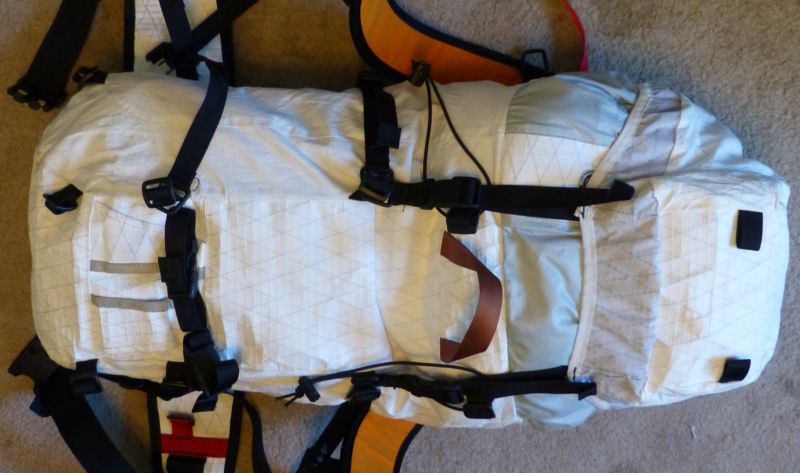
This is a view of the back of the pack. Many features of the pack are visible. The central area of the pack is reinforced and has attachment points for crampon straps to secure a pair of crampons on the back of the pack. The two white triangle shaped pieces of material (that have reflective tape on one side) are where the heads of the ice tools go. The ice tool heads are secured with the side release buckles next to the white triangular material. The shaft of the ice tools are secured with the black cords that are higher up on the pack. The doubled cord is wrapped around the shaft, and then the cord is looped over the cord toggle. Then the cord toggle is tightened to secure the cord loop. The cord is 1/8 inch elastic. The V5 pack features a Dee-clip between the tool holders, and a sliplock inside of the back haul loop.
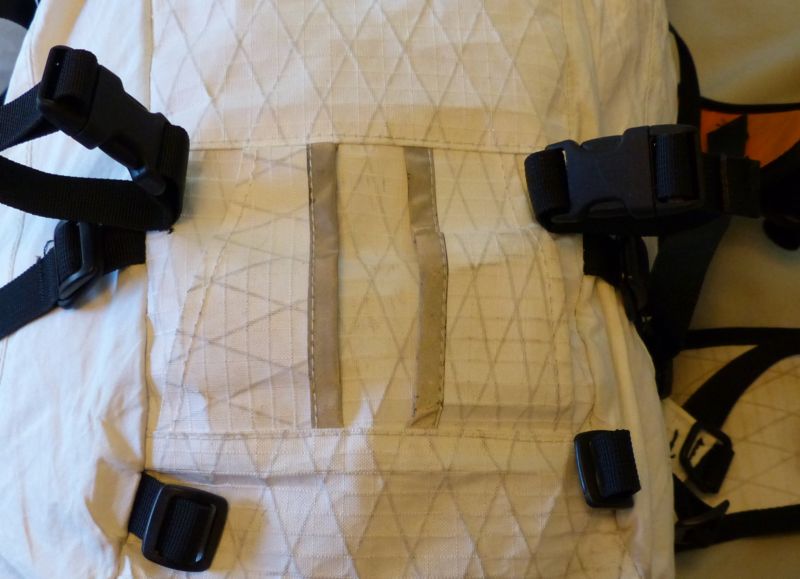
This is a close up of the tool holders on the pack. There is a flap of material sewn to the pack at both ends that secures the head of the tool. The shaft near the head is secured with the black side release buckle. The inside of the flap of material is edged with reflective material to make it easy to see in low light conditions.
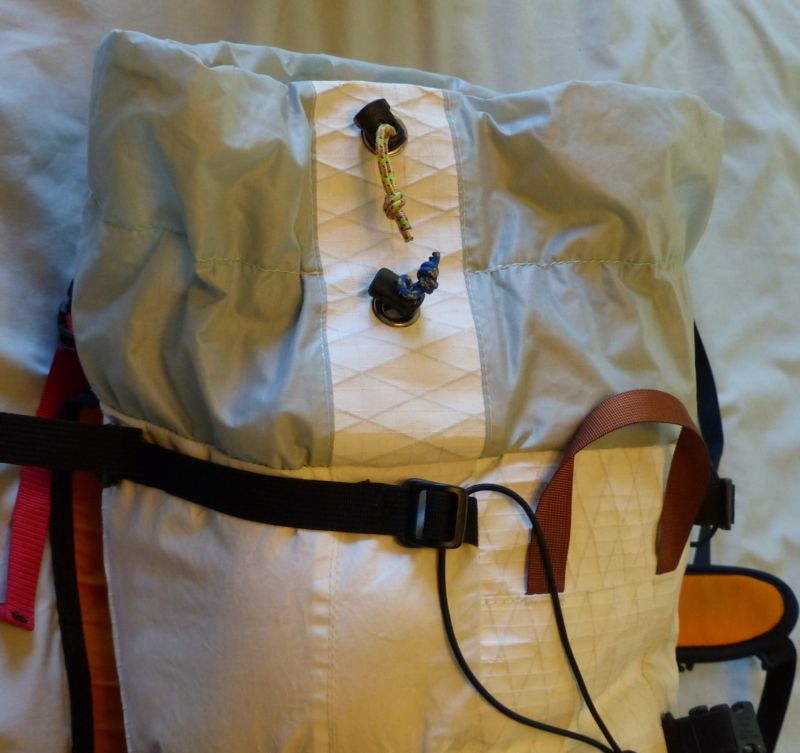
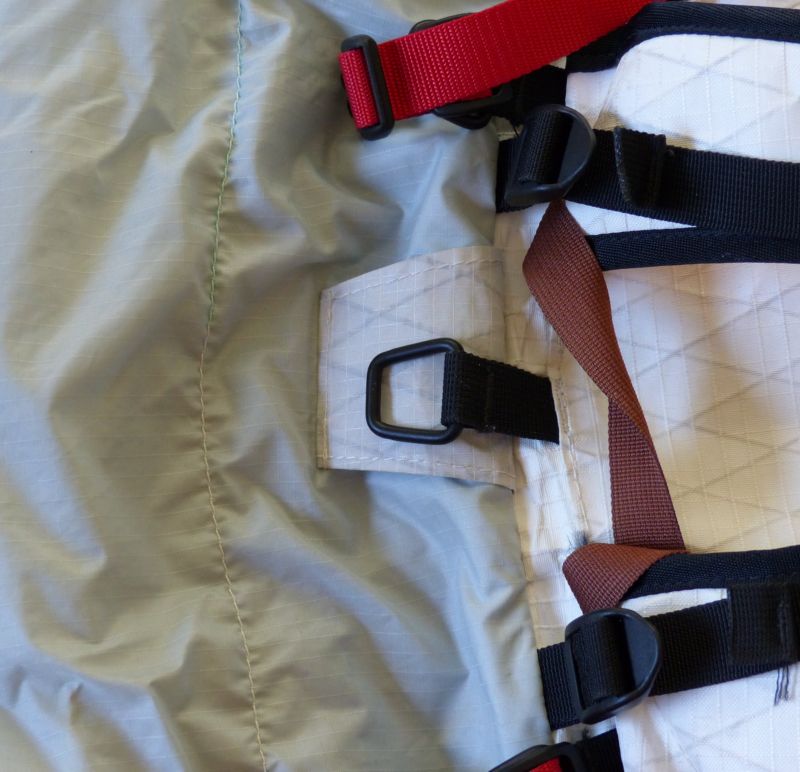
This is the skirt extension. It is a bit shorter than on other CiloGear packs, which makes sense, as this pack is smaller. The skirt is made of two layers of nylon coated with silicone, which is very lightweight, and abrasion resistant. Since it is usually inside the pack, it doesn't need to be as robust as the normal exterior of the pack. You can see there are two draw-cords, one near the middle of the skirt, which is the one that is usually used. They are Sterling Rope's Glo-Cord, which is 2.75mm cord with a reflective exterior. When the skirt is used, the drawcord on the top of the skirt is used. Also visible in this picture is the brown haul strap on the back of the pack.
The second picture shows the front side of the skirt extension. The small white reinforced area in the picture is where a hydration tube can exit the pack. The dee-clip is used to secure the lid when the skirt is not extended.
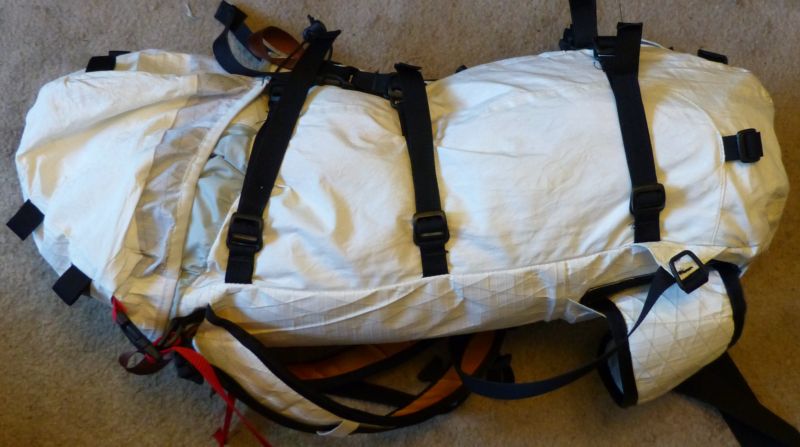
This is the side of the pack. The lid of the pack is on. I put three side compression straps on the pack. The v5 packs have room for up to four compression straps on the side of the pack, which I think is a nice idea for having more options for snugging down the pack. There is a sliplock near the bottom of the pack on each side. I am not sure what it is for. Below that, is the bottom of the pack which is made of a second layer of material, as much wear occurs near the bottom of the pack. It is quite robust.
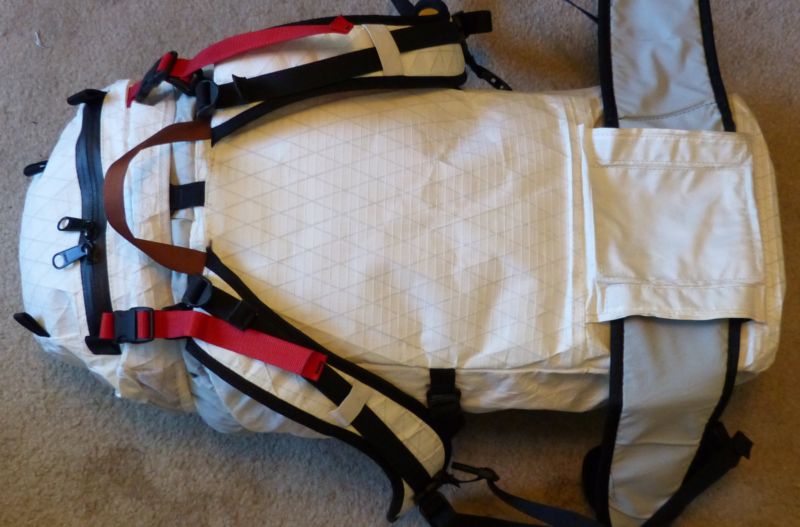
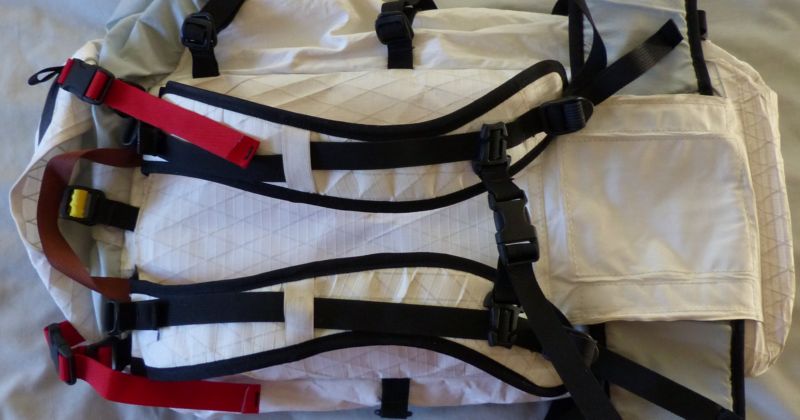
This is the front of the pack, i.e. the part which rests against your back. The lid is on the pack. The lid attaches to the pack with two adjustable red straps, as well as a dee-clip in the center. If you use the skirt to load lots of stuff in the pack, the central dee-clip is disconnected and two higher dee-clips can be used to attach the lid, rather than the lower dee-clips. This is a much more elegant way to attach the lid than the WildThings Icesac's lid. Next to the lid, is a brown haul strap. The shoulder straps are sewn directly to the pack. The shoulder straps are lighter in weight and have less padding than the larger CiloGear pack shoulder straps, which makes sense, as the pack is designed to carry less weight. The padding is a hard, thin foam. I measured the foam as being 1/4" thick, and having a density of 2.1 pounds per cubic foot. I don't know what it is made of, but it is much stiffer than cross linked polyethylene (XPE) 2.2 pound per cubic foot foam. Not visible, is the bottom of the shoulder straps which attach to a double thickness triangle of material which is the same material as the bottom of the pack. The shoulder straps have load transfer straps which attach to the top of the frame of the pack. There is also a removable sternum strap which is adjustable up and down.
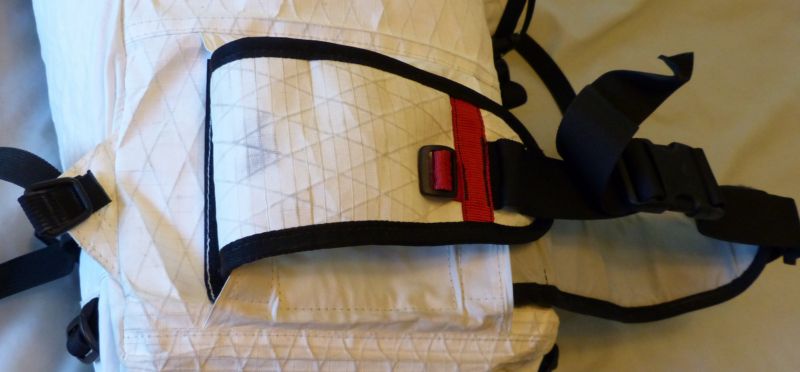
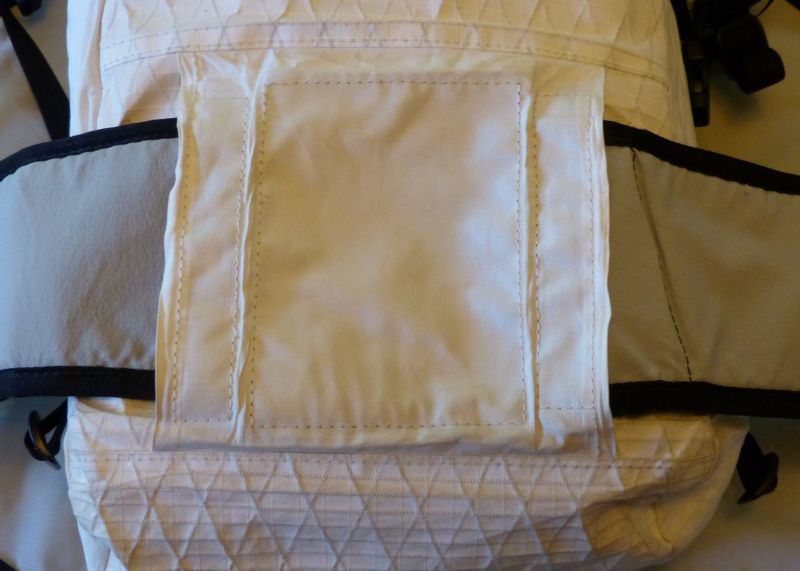
This is the hip belt. It is pretty similar in construction to the shoulder straps except the foam is thinner and softer. The belt is a single piece, with some velcro in the center.The first picture shows the triangular piece of material where the shoulder straps attach. Also visible is a Dee-clip which can accept a strap that attaches to the slip-lock on the belt to pull the pack closer to your back. On the bottom of the pack is a white, slot sewn to the pack with velcro inside of it. The larger CiloGear packs have a sacrum pad here, but this pack has no padding. The velcro mates with the hip belt velcro. The pack frame height is adjustable by about an inch, based on how the hipbelt is attached. This is very similar to the way the Kelty cloud packs adjust. There are attachment points on the end of the belt for gear loops, which are generally used to hold rock climbing gear while climbing.The hip belt attaches in the front using 1.5 inch webbing and a standard side release plastic buckle.
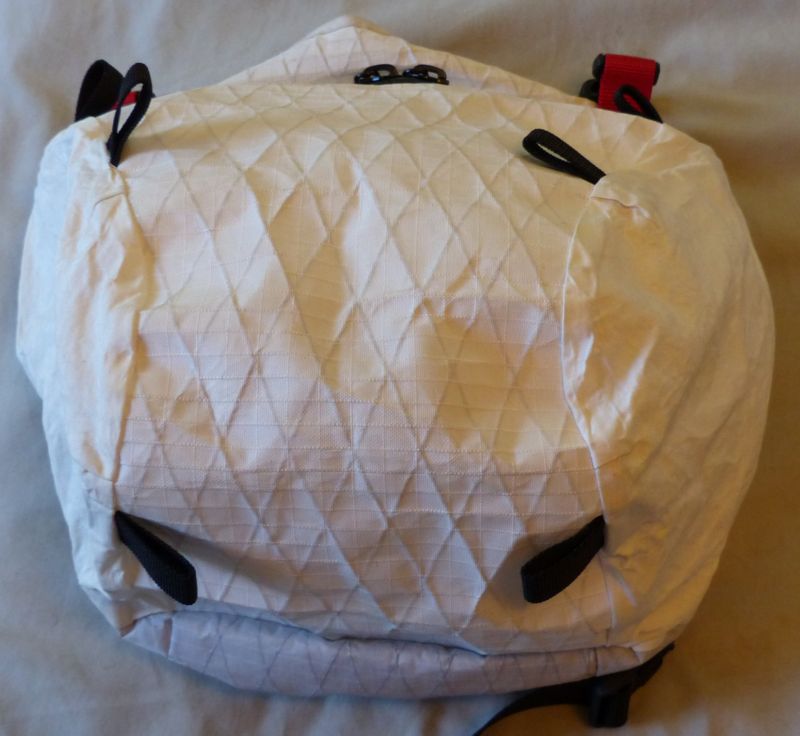
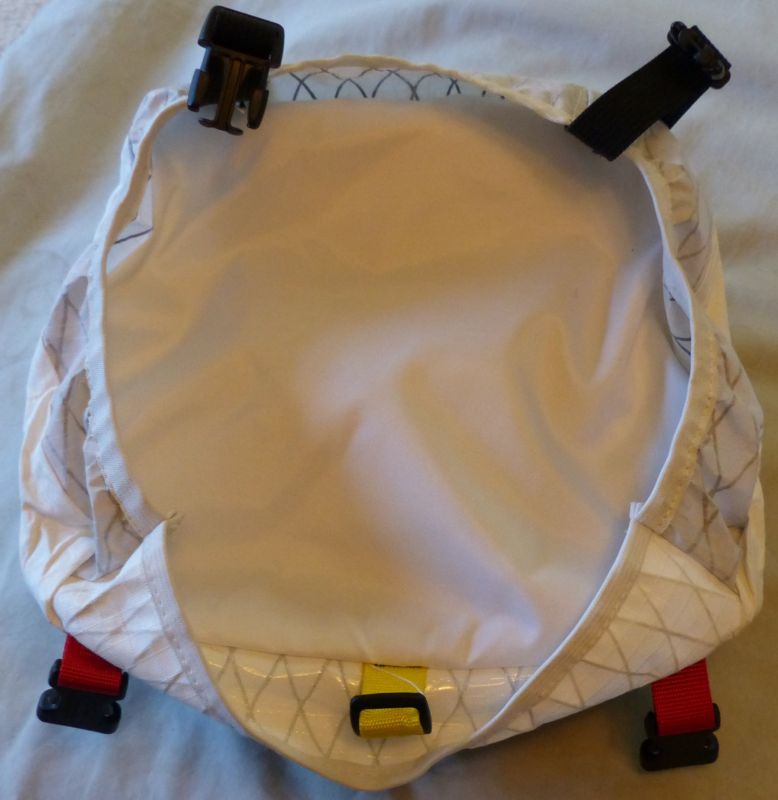
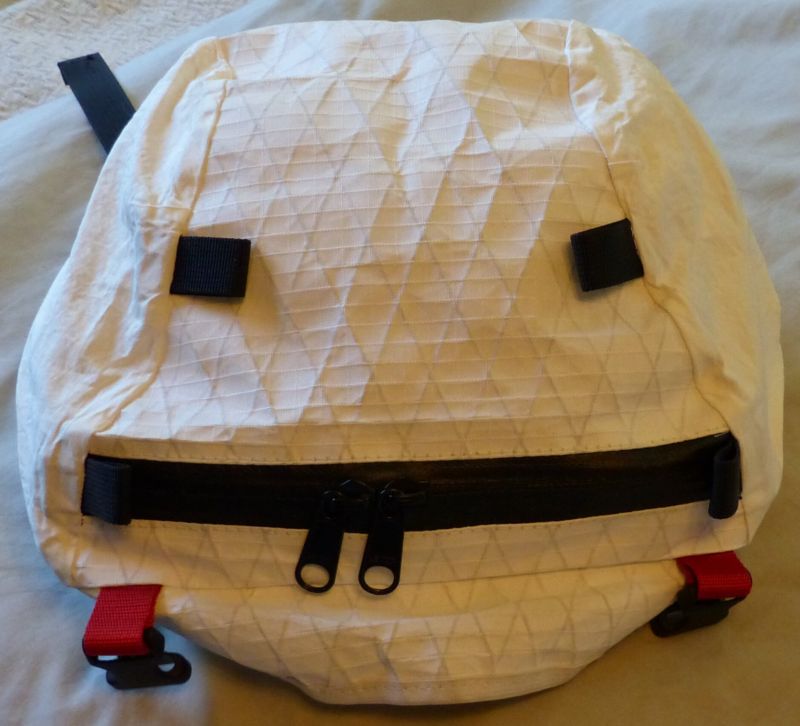
This is the pack lid. It is smaller and simpler than the lids on the larger CiloGear packs. There are four lash points around the perimeter of the lid. I believe these are designed to secure a climbing helmet, but could be used for other things. The last picture shows the side view, which shows the zipper to the single lid compartment. It features two zipper pulls as well as an urethane coating on the zipper fabric and teeth for water proofing. You can see the two red straps which are used to attach the lid to the pack. The central yellow strap has a slip-lock which mates with a dee-clip on the pack. Since the main pack has a drawstring, the lid isn't really needed, and can be left off if desired.
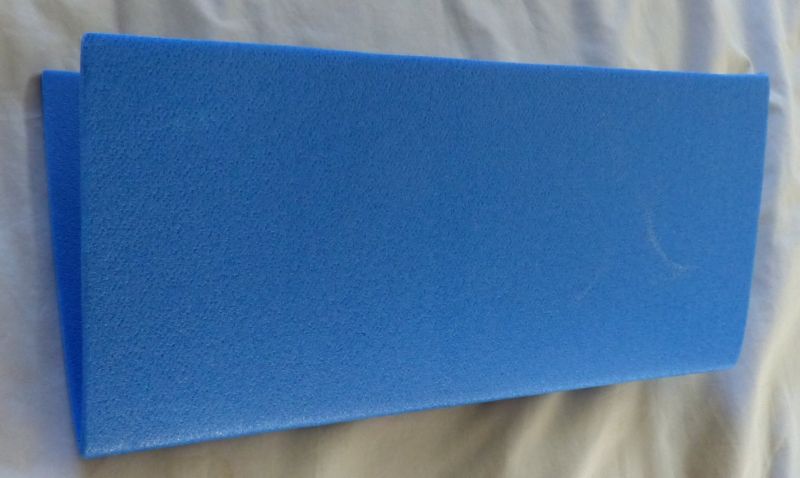
Like the WildThings Icesac, the CiloGear pack has a frame which consists of a piece of foam. The CiloGear foam is stiffer than the Icesac which uses what feels like ensolite. The CiloGear frame is thin, quite dense foam folded in half (its blue). The larger CiloGear packs also have a HDPE framesheet with an aluminum stay. The 30L pack framesheet slot is too small for the CiloGear standard sized HDPE framesheet. For heavy loads, I plan on buying a piece of HDPE and using it in addition to the foam. It makes sense to not have the HDPE framesheet for the 30L pack, as it is designed and sized for much smaller loads then the bigger packs. The pack is remarkably stiff even without the foam framesheet. I didn't realize it wasn't in the pack until I looked inside.
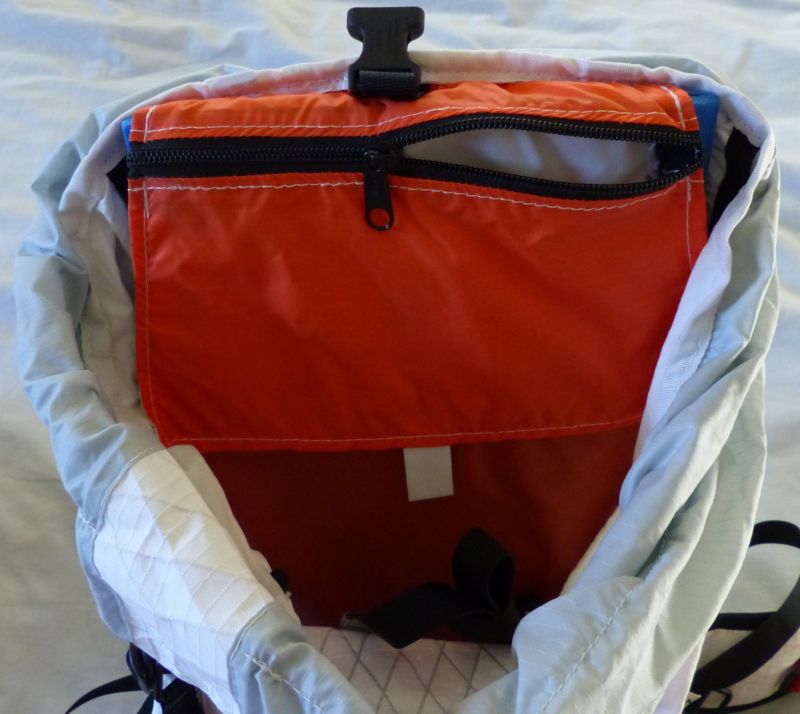
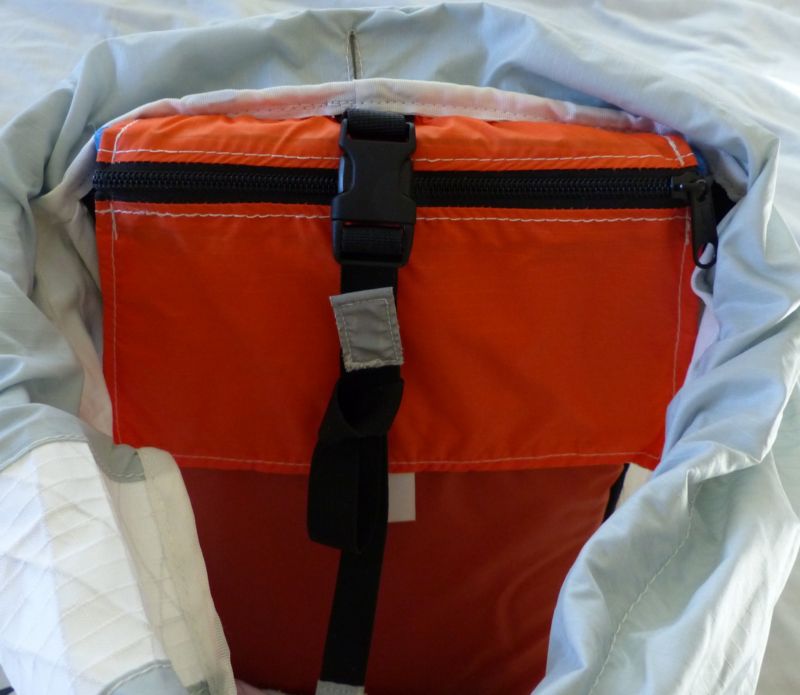
The foam goes inside a pocket inside the pack. The top of the frame pocket has a flap that folds over and velcros to secure the frame. On the flap is an orange zippered gear pocket. Unlike the larger packs there is no keyholder inside the gear pocket. Another feature of this pack is an internal compression strap which is visible in the second picture. The end sewn to the pack has some reflective fabric on it, as well as the other end of the strap, which I tied to the middle of the strap to make it easier to photograph. There is a plastic side release buckle for the compression strap. Also visible above the pocket is the slot in the skirt extension where a hydration tube can be inserted to get to the outside of the pack.
The pack comes with very little sewn onto it. There are many dee-clips, which are made out of steel and sliplocks (double D rings), which are made out of acetal, sewn onto the pack with webbing. You can attach a wide variety of straps on the pack to these dee-clips and sliplocks. You can compress the pack without the use of straps by mating the one or more pairs of the appropriate dee-clip and sliplock on the sides of the pack. I find that quite elegant. You can remove the lid as well as the hip belt. You can remove the foam padding (though it is unlikely I ever would). There are many places to strap things onto the pack, such as the four lash points on the top of the lid, and the gear loop attachment points on the hipbelt.
One small detail I appreciate is that most of the straps are 0.75 inches wide. This is wide enough to not get twisted up, and plenty strong for virtually any use. My WildThings IceSac uses mostly heavy 1 inch webbing, which is overkill in my opinion.
If you have comments or suggestions, Email me at turbo-www@weasel.com
Created with gnu emacs and template-toolkit, not some sissy HTML editor.
No Java or javascript needed to view my web pages. They
both have significant security issues.